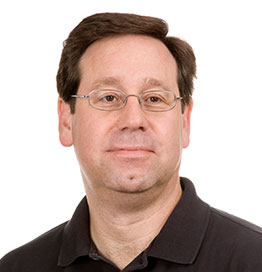
RAPID + TCT is celebrating its 30th anniversary in 2021, and to celebrate we’re connecting with industry professionals who have attended for many years.
Michael Raphael, president and chief engineer of Direct Dimensions Inc., is one of our longtime friends and attendees. Raphael has attended RAPID + TCT 15 times.
Raphael founded Direct Dimensions Inc. (DDI) in 1995 as an engineering company to provide a one-stop shop for 3D technical services, product representation, sales and support for all types of 3D scanning, imaging and measurement solutions. Over the past 20 years, DDI has expanded significantly to use the most comprehensive array of 3D scanning technologies and digital modeling solutions for the widest range of applications and industries. Today, Direct Dimensions employs more than 25 technical and professional staff members, and performs hundreds of 3D scanning and modeling projects every year using the widest variety of 3D solutions — with a special emphasis on high-accuracy 3D scanning solutions. Raphael graduated from Virginia Tech with a Bachelor of Science degree in engineering science and mechanics in 1985, followed by a Master of Science degree in engineering administration from George Washington University in 1990.
Why did you get started in rapid prototyping? What is your unique story?
I first learned about rapid prototyping around 1992. I was working as an engineer at what was then a Martin Marietta Aerostructures design and manufacturing plant here in Baltimore (now a Lockheed Martin plant). We were starting to design parts in 3D CAD around then. Before this it was all done on the drafting board. With 3D CAD you could make rapid prototypes, as they were called, or simply RPs. At the time I wasn’t directly involved in doing this, but I was close to the group that did. My world was dimensional measurement, so I got to inspect some of these parts and compare them back to the 3D CAD model. At the time, I had been directly involved in the development of a portable coordinate measurement machine (CMM) called the FaroArm, which we started in 1989 with FARO Technologies. Our goal was to be able to go out into the factory to check the dimensions and locations of parts within large assemblies, but to also be able to “reverse engineer” older parts into 3D CAD.
By 1995 I decided to leave aerospace and start Direct Dimensions Inc. I bought a FaroArm and started 3D-measuring things for people. One of the early projects was a sculpture for the U.S. Olympics in Atlanta and a set of very large gears for the space shuttle handling dolly. Also around that time we got a table at a very small trade show on manufacturing technology here in Baltimore. I met two super-early rapid prototyping people: Bruce LeMaster of Applied Rapid Technologies and Paul Blake of Stratasys. We all then stayed in touch and did projects together — them printing, me scanning.
How has attending RAPID + TCT impacted your business and/or career?
As you note, I have been at pretty much all RAPIDs for many years. I don’t remember missing any since I started going. I recall early ones in Dearborn, not sure what years. Almost immediately I started giving presentations, having exhibition space and becoming an advisor. I am still close to this day with many of the early folks: Giles Gaskill, Andy Christensen, Lauralyn McDaniel, Angie Szerlong, Annemarie Kalergis, Carl Dekker, Rich Motto, Sean Wise, Jim Williams, Steven Rouse, Jason Lopes, Ralton Emory, Todd Grimm, Gina Strickland, Zach Simkin and so many more.
Why do you come to RAPID + TCT?
See above — to see those people and everybody else. Seriously, it’s the best time of the year to see the most people doing 3D things: printing and scanning.
Thank you so much for sharing your story with us, Michael! We appreciate your loyalty to RAPID + TCT and all the time you’ve spent with us.
